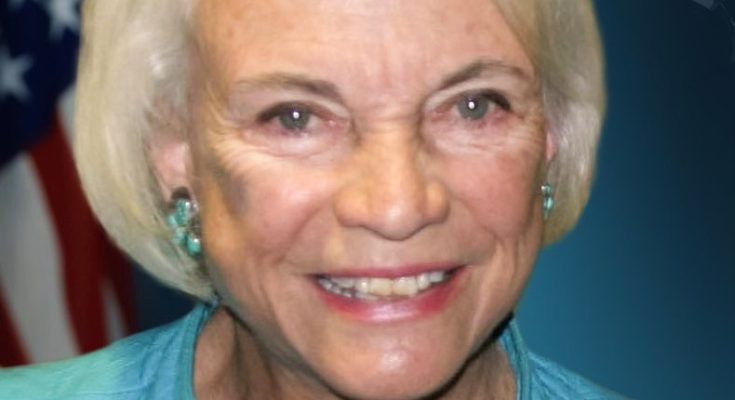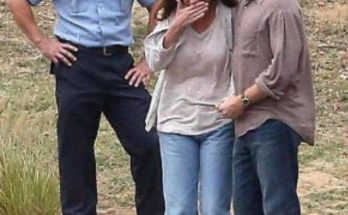She was 93 years old.
The Supreme Court said in a statement that O’Connor died of complications at her home in Phoenix, Arizona. In October 2018, she said she had been diagnosed with dementia.
Ronald Reagan appointed O’Connor to the Supreme Court in 1981. She had a big effect on the court, becoming a key moderate justice and earning the title of “most powerful woman in America.”
As the first woman to serve as a Justice in the United States, Sandra Day O’Connor paved the way for women in the legal field, Chief Justice John Roberts said in a statement.
“She took on that challenge with unwavering determination, undeniable skill, and an interesting honesty.” “We at the Supreme Court are saddened by the death of a respected colleague who stood up for the rule of law and spoke out passionately for teaching civics,” he said.

Before she died, O’Connor was the last living Justice to have served on the Burger Court, which was in place from 1969 to 1986 while Warren Burger was Chief Justice.
O’Connor was born on March 26, 1930, in El Paso, Texas. Her parents were Harry Day and Ada Mae Day. She was raised as a cowgirl.
Growing up on a cattle ranch that didn’t have running water until she was seven years old, O’Connor learned a lot about ranch life by helping to take care of it and being a part of its culture.
She did things like milk cows, ride horses, and shoot coyotes every day. She often thought about how working on the ranch had helped her develop her work ethic.
She once said that going on cattle drives with a team mostly made up of men was her “first introduction to joining an all-men’s club.” This was something she would come to know well over the course of her career.
In 1946, when she was only 16, O’Connor went to Stanford University. She had graduated sixth in her high school class.
She graduated from high school with honors in 1950 and went on to study law at Stanford because she was accepted into a program that let her start in her senior year. She was one of only four women who did it.
In her last year of law school, O’Connor met John Jay O’Connor III, who would become her husband. They got married in 1952, not even six months after O’Connor graduated. Before he died in 2009, they were married for 52 years.
Their three kids were born between 1957 and 1962. Their names were Scott, Brian, and Jay.
Even though O’Connor did well in school, it was hard for her to get a job after she graduated because the field was mostly men.
For a while, she worked for the government of San Mateo County. In 1954, she and her husband moved to Germany, where he was an Army lawyer. After three years, they moved back to the US, where O’Connor got involved in politics in his new area.
As of 1969, O’Connor had worked as an assistant state attorney general for four years, volunteered with the Maricopa County Young Republicans, and worked on the presidential campaign of former Arizona senator Barry Goldwater. When a seat opened up in the Arizona State Senate, the governor chose O’Connor to fill it.
When she ran for re-election in 1972 and won, she was the first woman to be the party leader in the Arizona State Senate. After two years, she was put on the Maricopa County Superior Court, and after four years, she was put on the Arizona State Court of Appeals.
It was time for Reagan to keep his promise and choose the first female Supreme Court Justice. O’Connor stood out as a well-rounded, moderate Republican who agreed with his views on abortion.
Her hearing for the Supreme Court nomination began on September 9, 1981. It was the first hearing to be shown on TV. After three days, the Senate unanimously approved her nomination.
O’Connor wrote 645 opinions for the Supreme Court during her 24 years there. They covered a wide range of issues, from the right to vote to religious freedom to abortion.
When O’Connor first joined the court, she usually agreed with the conservative side. But these days, many people would see her as a moderate because she did agree with the liberal side in some cases.
She wrote the majority opinion in the case of affirmative action, Grutter v. Bollinger. In it, she talked about the benefits and important interests of having a diverse student body. That said, she agreed with the conservative majority when they threw out a similar policy in Gratz v. Bollinger.

Notably, O’Connor joined the majority opinion in Planned Parenthood v. Casey, which upheld state restrictions on abortion and upheld Roe v. Wade. This was despite the fact that 11 years earlier, she had told Reagan that she thought abortion was “personally abhorrent.”
O’Connor supported state’s rights and often agreed with William Rehnquist, who was chief justice at the time.
After her husband was diagnosed with Alzheimer’s disease in 2005, she said she was leaving the Supreme Court.
Justice Samuel Alito took her place almost a year and a half later, and she was given the Presidential Medal of Freedom when she retired.
Afterward, she told The Wall Street Journal, “I didn’t step down because I felt I couldn’t sit anymore.”
After she retired, O’Connor kept busy by working on cases in federal appeals court, being chancellor of The College of William & Mary, and pushing for more civics education.
In 2018, she said she had been diagnosed with dementia and went back to living a quiet life.
The three sons she had, Scott, Brian, and Jay, and her six grandchildren will miss her.







